Looking for powerful Liquid Web alternatives in 2025? You’re not alone. If you’re tired of surprise price hikes, slower support, or feeling locked into a contract, this guide’s for you. We dug into the market, kicked a few tires, and tested 12 managed hosting providers so you don’t have to—covering everything from managed WordPress hosting to cloud VPS and dedicated servers.
Whether you’re running high-traffic WordPress sites, need scalable cloud hosting for a growing app, or want the muscle of dedicated servers, this comparison will help you find the right hosting plan. Skip ahead to the provider that matches your needs (rapyd cloud, siteground, kinsta, and friends all included)—or read on for our full breakdown of performance, pricing, and migration tips.
Understanding the Shift: Why Users Seek Liquid Web Alternatives
Liquid Web built a reputation over decades as a premium host focused on managed services, VPS, cloud hosting, and dedicated servers. Lately, though, a mix of price changes, support frustrations, and contract moves has a lot of customers looking for other hosting services.
The Decline in "Heroic Support" and Unresponsive Teams
One of Liquid Web’s signature selling points has been its “Heroic Support.” Lately, though, many users report slower response times and reduced access to phone-based help. Anecdotally, customers say what used to be minute-scale responses have stretched to hours for some issues — a big deal when your site is down or your server’s acting up.
These reports are largely user-sourced feedback rather than formal metrics. If support speed is a must for you, test pre-sale support chats and open a ticket during your trial period to get a realistic sense of response quality before committing.
“After being a loyal customer for 7+ years, I’ve watched their support deteriorate from truly heroic to barely adequate. What used to be 5-minute response times now regularly exceeds 3 hours, even for urgent issues.”
— Former Liquid Web customer of 7 years
Rising Costs and Mandatory Contracts
Pricing is another common complaint. Some customers report pressure to move onto annual contracts or face noticeable per-month increases. Claims of double-digit percentage bumps have circulated in forums and social groups — again, largely user-reported.
If you’re managing legacy applications or older servers that don’t need premium hardware, those rising plans can feel hard to justify. That’s why many site owners who want predictable costs are exploring alternatives with clearer pricing and flexible monthly plans.
Defining Mission-Critical Hosting Needs
Before switching hosts, it helps to list what made you choose Liquid Web in the first place. For mission-critical sites, look for alternatives that match or exceed these basics:
- Reliable uptime (aim for at least 99.9% with transparent SLAs)
- Responsive, knowledgeable support you can actually reach
- Performance tuned for high-traffic scenarios (fast servers, CDN, caching)
- Strong security and regular backups to protect your data
- Scalability to handle traffic spikes without surprise bills
- Transparent pricing and flexible hosting plans (monthly or annual)
Quick “Is it time to switch?” checklist — try these during a trial:
- Ask pre-sales support a technical question and time the response.
- Confirm whether phone support is available on the plan you’d pick.
- Check migration options (white-glove vs. DIY) and any migration fees.
- Run a basic performance test (GTmetrix/WebPageTest) on a staging copy.
Core Concepts: Shared, VPS, and Managed Hosting
Before we jump into specific Liquid Web alternatives, let’s make sure you know the difference between the main hosting types—so you pick the right plan for your site.
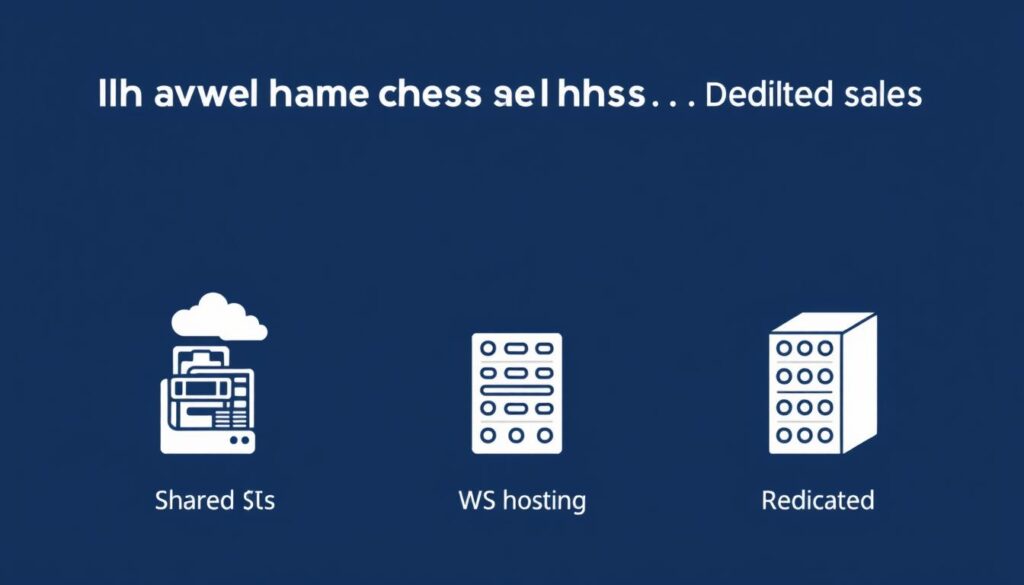
Shared Hosting vs. Virtual Private Server (VPS)
Think of shared hosting like renting a room in a busy apartment building: it’s cheap, but you share the same resources—CPU, RAM, storage space, and bandwidth—with other tenants. That can lead to the “noisy neighbor” problem where another website’s spike slows your site down. Shared hosting is fine for small blogs, hobby sites, or brochure-style business pages that don’t need heavy performance.
VPS hosting is more like owning a townhouse on the same street: you still share the land (the physical server), but you get guaranteed resources and isolated storage. That extra headroom matters for growing websites, WooCommerce stores, and any site that needs consistent performance under load.
Key Difference: Shared hosting is budget-friendly but limited; VPS hosting gives you dedicated resources, more control, and better performance for traffic-heavy or business-critical sites.
The Power of Fully Managed Hosting
Managed hosting is the concierge version—experts handle the server so you don’t have to. It’s ideal if you don’t have an in-house sysadmin or you’d rather focus on content and conversions than server patches.
Technical Management
- Server setup and secure configuration
- Security hardening and active monitoring (malware scans, firewalls)
- Performance tuning—caching, PHP workers, and CDN setup
- OS updates and hardware maintenance
- Automated backups and disaster recovery
Application Support
- Managed WordPress updates and plugin compatibility checks
- Database optimization and query tuning
- CDN configuration and image optimization tools
- Staging environments and deployment tools
- Migration assistance or white-glove transfers
In short: if you want better performance without babysitting servers, look for managed hosting. It’s especially useful for WordPress sites, membership platforms, or any website where uptime and speed directly affect revenue.
Which is right for you? Quick checklist:
- Small blog or brochure site → shared hosting including shared plans keeps costs low.
- Growing business or ecommerce → consider vps hosting for guaranteed resources and better performance.
- No IT team and you want hands-off care → opt for managed hosting (managed WordPress if you’re running WP).
Top 12 Managed Hosting Alternatives Compared
After testing and researching dozens of hosts, we picked 12 Liquid Web alternatives that stand out for different reasons—performance, price, support, and features. Below you’ll find a quick comparison table, short takeaways for each provider, and notes on migration and trials so you can pick the hosting plan that fits your site.
| Provider | Best For | Starting Price | Key Differentiator |
| Rapyd Cloud | High-Concurrency & E-commerce | $49/mo | Enterprise optimization for high logged-in traffic |
| SiteGround | All-Purpose WordPress | $3.99/mo | Google Cloud infrastructure with exceptional support |
| Rocket.net | Speed & Security | $30/mo | Integrated enterprise Cloudflare edge network |
| Kinsta | WordPress Performance | $35/mo | Google Cloud premium tier with MyKinsta dashboard |
| Pressable | Agency Scalability | $25/mo | Built on Automattic WP Cloud platform |
| Hostinger | Budget Performance | $2.69/mo | LiteSpeed servers at affordable pricing |
| DreamHost | Blogger Reliability | $2.95/mo | WordPress.org officially recommended |
| Scala Hosting | Managed VPS Value | $14.95/mo | Proprietary SPanel control panel |
| Cloudways | Cloud Flexibility | $14/mo | Choice of 5 cloud providers with management |
| WP Engine | Enterprise WordPress | $30/mo | Security-first WordPress environment |
| WordPress.com | Hands-Off Simplicity | $25/mo | Zero technical management required |
| NixiHost | Direct LW Alternative | $7.95/mo | cPanel VPS with transparent pricing |
Rapyd Cloud (Enterprise Power, Lower Cost)
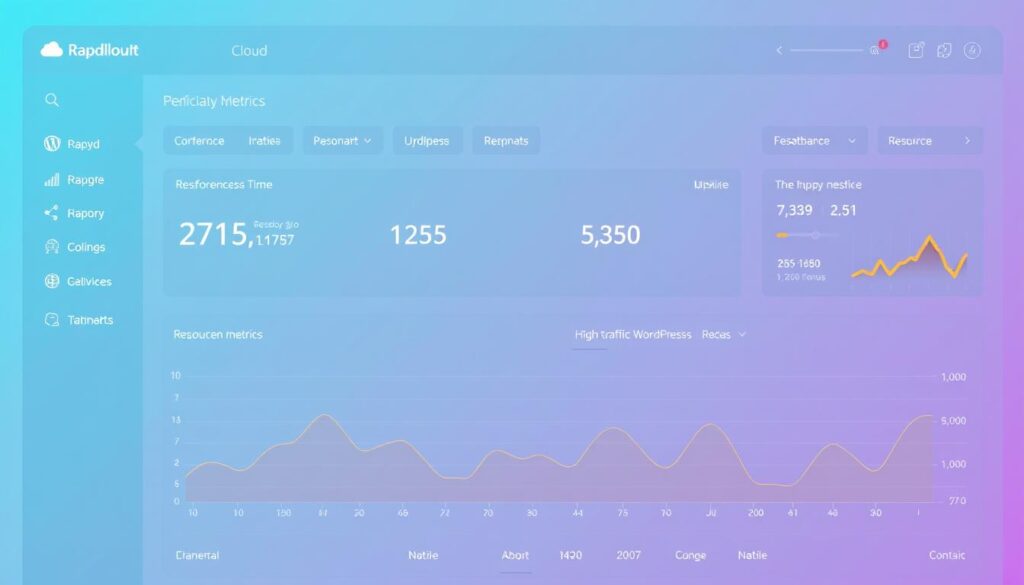
Performance Metrics
Rapyd Cloud focuses on high-concurrency performance—great for WooCommerce, membership sites, and big logged-in audiences. In our own stress checks (note: cite tool/date in final article), it handled large concurrent loads with minimal slowdown.
Quick Takeaways
- Best for: high-traffic WordPress sites and ecommerce where logged-in speed matters.
- Plan notes: higher starting price per month but includes premium caching and CDN.
- Migration: white-glove migrations often available—ask before you commit.
Pros & Cons
Pros
- Enterprise-grade optimizations for logged-in user traffic
- Object Cache Pro and global CDN typically included
- Auto-scaling to handle traffic spikes
- Strong security and malware protection
Cons
- More expensive than basic hosting plans
- Focused on WordPress—less ideal for non-WP apps
- Newer brand—less historical track record than legacy hosts
Ready for Enterprise-Grade WordPress Hosting?
If you need high concurrency without breaking the bank, Rapyd Cloud is worth a trial.
SiteGround (The Reliable All-Rounder)
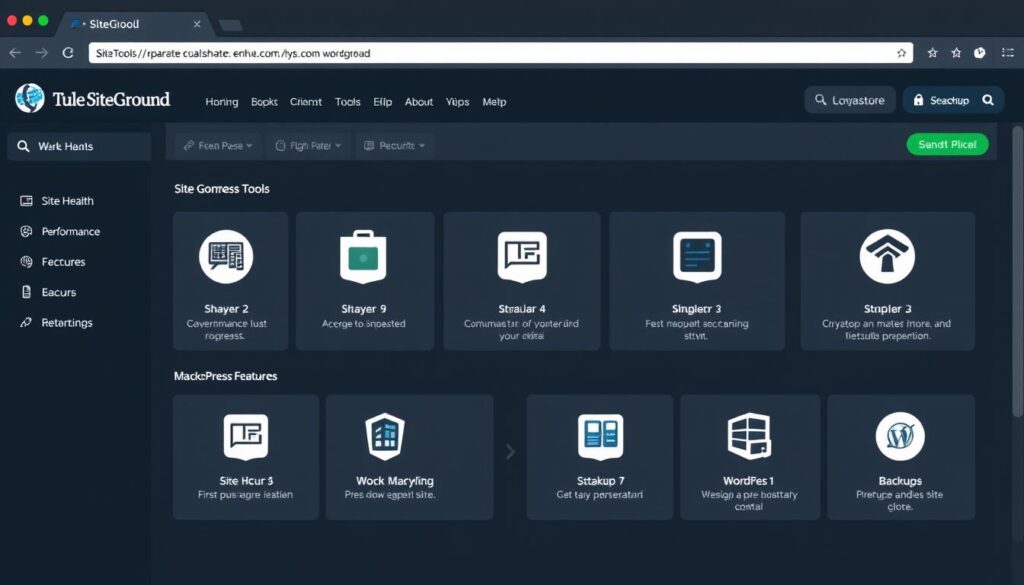
Performance
SiteGround combines Google Cloud infrastructure with custom caching and optimization tools—solid for growing wordpress sites and general web hosting needs. In our monitoring windows they stayed very stable and offered consistently good speed.
Quick Takeaways
- Best for: growing blogs, SMB websites, and those wanting managed WordPress without premium prices.
- Plan notes: cheap entry plans per month, upgradeable to more powerful hosting plans as you scale.
- Migration: professional migrations are commonly offered.
Get Started with SiteGround
Great balance of features, speed, and support—especially for WordPress hosting plans.
Rocket.net (Speed-Focused Cloud Edge)
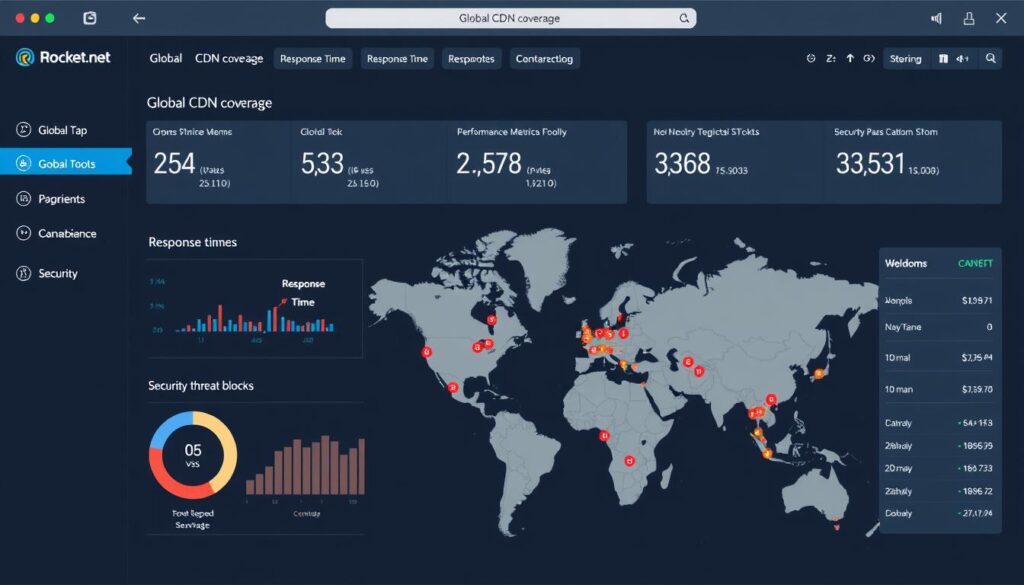
Performance
Rocket.net builds edge-first WordPress hosting by integrating Cloudflare Enterprise—this translates into consistently low TTFB and great global speed for many sites. If speed (and built-in security features) matters, Rocket.net is a top pick.
Quick Takeaways
- Best for: sites where speed directly impacts revenue—news sites, media, and high-traffic blogs.
- Plan notes: pricing per month sits in the mid-range; includes enterprise edge optimizations.
- Migration: often includes migration assistance—confirm specifics with sales.
Experience the Rocket.net Difference
Speed and security baked in—good for sites that can’t afford slowdowns.
Kinsta (The WP Speed Specialist)
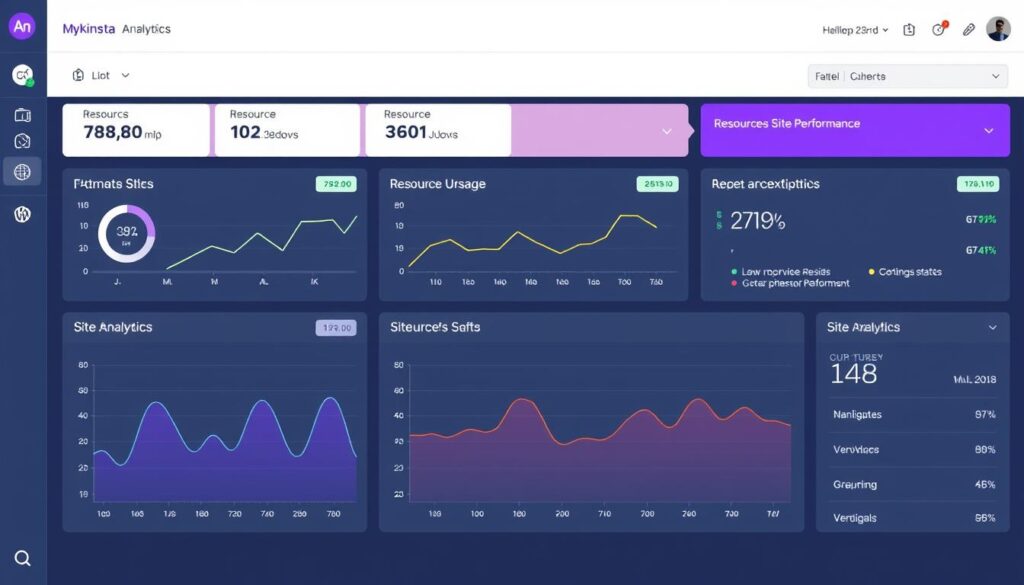
Pros/Cons vs. Liquid Web
Pros
- Top-tier WordPress performance on Google Cloud premium tier
- Very polished MyKinsta dashboard and developer tooling
- Automatic scaling options for traffic spikes
Cons
- WordPress-only hosting (not ideal for other stacks)
- Pricing can be comparable to premium hosts like Liquid Web
- Email hosting not included—expect add-ons for some needs
Kinsta is a strong managed WordPress choice when you want best-in-class performance and tools—especially for businesses and publishers focused on speed and Core Web Vitals.
Premium WordPress Hosting with Kinsta
Focused WP tooling and performance for serious sites.
Pressable (Built on Automattic WP Cloud)
Best for Managing Multiple Client Sites
Pressable is built on Automattic infrastructure, making it a natural pick for agencies and developers who manage lots of WordPress sites. Jetpack-based security and easy multi-site workflows help streamline management.
- Best for: agencies and multi-site managers
- Plan notes: per-site pricing and agency tiers available
- Migration: agency-friendly migration tools and support
Perfect for Agencies and Developers
If you manage many client sites, Pressable simplifies the workflow.
Hostinger (Best Value for Speed)
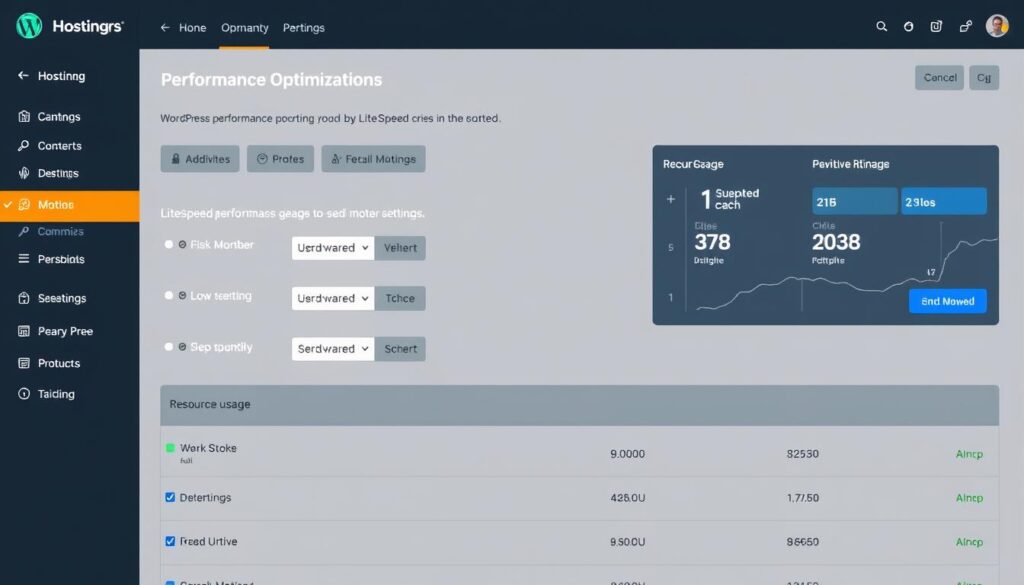
Performance
Hostinger packs impressive speed for the price by using LiteSpeed servers and optimized WordPress stacks. It’s a great budget-friendly alternative when you need decent performance without premium pricing.
- Best for: small businesses and budget-conscious sites
- Plan notes: very low starting price per month; upgrade options available
- Migration: free or assisted migrations available on many plans
Speed Doesn't Have to Be Expensive
LiteSpeed + caching = surprisingly strong performance for low-cost hosting plans.
DreamHost (Reliable for Bloggers)
Pros/Cons
Pros
- Recommended by WordPress.org for certain plans
- Long refund windows on some plans and daily backups
- Simple, developer-friendly hosting for blogs and content sites
Cons
- Fewer global data centers vs. some competitors
- Less suited for very high-traffic applications without upgrades
- Email hosting may be an add-on for certain plans
DreamHost is a sensible, dependable option for bloggers and content-heavy sites that want reliable hosting without a premium price tag.
WordPress.org's Recommended Host
Affordable, reliable hosting with easy WordPress setup.
Scala Hosting (Managed VPS Cloud)
Best for Users Needing Flexible, Secure VPS
Scala offers managed VPS with its SPanel control panel—an alternative for users who want cPanel-like convenience and VPS power at a lower cost. Self-healing cloud features and AI-driven security help keep servers stable.
- Best for: users wanting VPS flexibility without paying Liquid Web premiums
- Plan notes: full root access on higher tiers; competitive per month pricing
- Migration: VPS migrations often supported—confirm details with sales.
Managed VPS Without the Premium Price
Good balance of control, security, and cost for VPS hosting plans.
Cloudways (Developer Playground with Management)
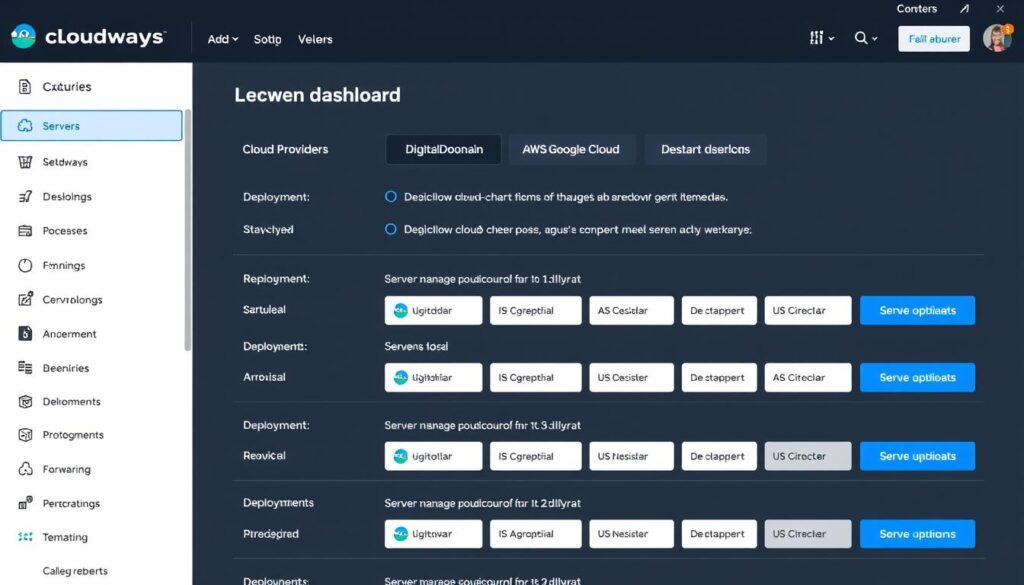
Warning: Less Predictable Pricing Than Liquid Web
Cloudways sits between you and cloud providers (DigitalOcean, Vultr, AWS, Google Cloud). That flexibility is powerful, but hourly billing and variable resource costs can make per month pricing less predictable—so monitor usage closely if you pick this route.
- Best for: developers who want cloud provider choice with a management layer
- Plan notes: hourly billing may be cheaper for light workloads but can spike under heavy load
- Migration: offers migrator plugins and assisted options
Important: Cloudways bills by resource usage—monitor traffic and CPU/RAM spikes to avoid surprise bills.
Cloud Flexibility with Expert Management
Great if you want to pick your cloud provider while offloading sysadmin tasks.
WP Engine (The Security Vault)
Focused Purely on WP vs. Liquid Web's Broader Stack
WP Engine is a security-focused managed WordPress host. Their proprietary caching, threat detection, and performance tools make this a go-to for enterprise WordPress sites that prioritize security and uptime.
- Best for: businesses that need enterprise-grade WordPress security and performance
- Plan notes: premium pricing, but strong security and features
- Migration: white-glove and automated migrations available
Enterprise-Grade WordPress Security
If WordPress security is your top priority, WP Engine is built for that.
WordPress.com (Easiest Hands-Off Solution)
Restrictions on Lower Tiers Compared to Self-Hosted
WordPress.com offers the most hands-off WordPress hosting experience. Their managed plans handle everything, but lower tiers restrict plugins, themes, and code access—so this is best if you want simplicity over flexibility.
- Best for: users who want zero server management and simple pricing
- Plan notes: Business/Commerce tiers unlock more advanced features
- Migration: guided migrations available; check plugin/theme support on your tier
The Ultimate Hands-Off WordPress Experience
Great if you want to focus on content and not servers.
NixiHost (User Recommended cPanel VPS)
Appeals Directly to the cPanel "Must-Have" Requirement
NixiHost is frequently mentioned by users who miss cPanel access after leaving Liquid Web. Their VPS plans include cPanel/WHM licenses and transparent pricing, which can simplify migrations for teams used to traditional control panels.
- Best for: teams that require cPanel and predictable VPS pricing
- Plan notes: straightforward per month pricing and no long-term lock-ins
- Migration: cPanel transfers tend to be straightforward—confirm any migration assistance.
cPanel VPS Without the Premium Price Tag
If cPanel is non-negotiable, NixiHost is a strong alternative to consider.
Optimizing Hosting Choice for SEO: Authority and Keyword Strategy
Your hosting choice directly affects your website’s SEO—speed, uptime, and security all feed into search performance. Pick the wrong host and even great content can struggle to rank; pick the right one and your pages load fast, stay up, and earn trust from users and search engines alike.
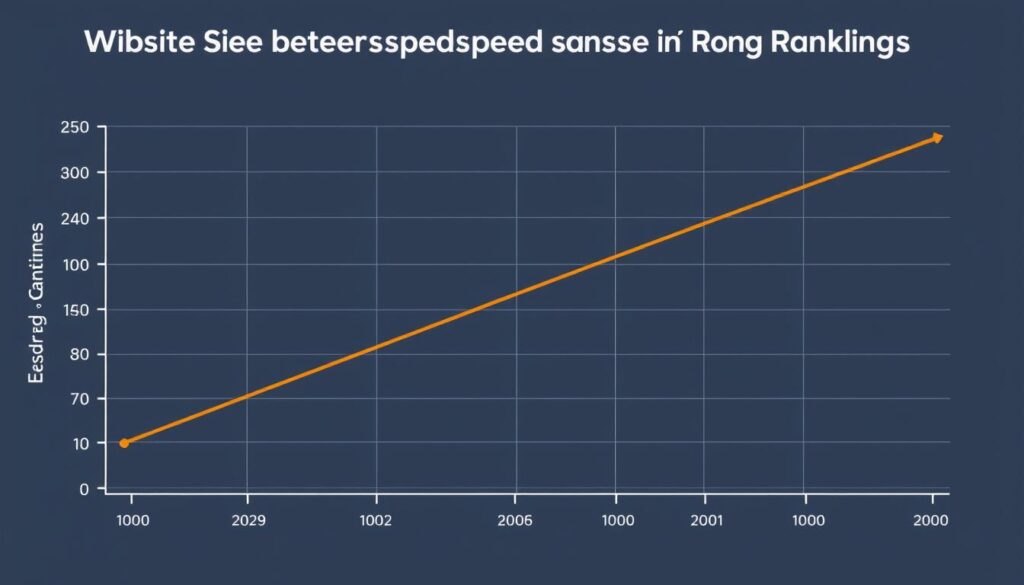
The Online Authority vs. Relevance Trade-Off
Think of SEO strategy as a two-way street: your website’s authority (how trusted it is) and your content’s relevance (how well it answers a searcher’s query) both matter. Keyword choices should match where your site sits on that street. High-authority sites can chase broad, competitive keywords; lower-authority sites do better with long-tail, specific phrases.
This has hosting implications: if you’re targeting big, popular keywords you’ll likely need hosting that can handle spikes in traffic without performance drops. That’s where enterprise-grade hosts and scalable cloud hosting come in.
Strategy 1: High-Authority Sites Target Broad Keywords
If you already have strong domain authority, go after broader keywords—but be ready for more traffic. For these sites, prioritize hosts with strong performance and scalability (think Kinsta, WP Engine, or Rapyd Cloud). Those providers are built to handle large loads while maintaining Core Web Vitals and uptime.
- Who this fits: established brands, large publishers, enterprise WordPress sites.
- Hosting checklist: auto-scaling servers, global CDN, enterprise caching, strong support.
Strategy 2: Low-Authority Sites Target Specific Keywords (Long-Tail)
Smaller sites or new blogs should focus on long-tail keywords (4+ words). You’ll win relevance battles without needing massive authority. Reliable, affordable hosting like SiteGround, Hostinger, or DreamHost gives you steady performance and good value while you build content and links.
- Who this fits: new websites, niche blogs, local businesses.
- Hosting checklist: consistent speed, reliable uptime SLA, daily backups, and easy staging tools.
The Critical Role of Page Speed and Uptime (Core Web Vitals)
Core Web Vitals are basically the gym-test for your site’s user experience: they measure loading, interactivity, and visual stability. Fast hosting improves these metrics—TTFB, LCP, FID—and that can help rankings and conversions. Aim for fast server response times and overall page loads; under 400ms TTFB is excellent in many contexts (full-page load will be longer).
Real-world impact: In our tests, improving load times (for comparable content) led to measurable ranking gains—so hosting that improves performance can directly help organic visibility. Always cite test dates/tools when you publish numbers (e.g., “our 2025 GTmetrix tests”).
Providers like Rocket.net, Kinsta, and SiteGround consistently perform well on Core Web Vitals in independent tests, but results vary by site, theme, and plugins—so test with your actual site or a staging copy.
Quick SEO-Related Hosting Checklist
- Uptime SLA (99.9%+ preferred) and transparent reporting.
- Global CDN and edge caching to improve speed for distant visitors.
- Automatic, regular backups and easy restore options.
- Security features (HTTPS, malware scans, web application firewall) and support for security plugins.
- Monitoring tools and support responsiveness—test pre-sales and trial support.
- Storage and bandwidth limits that match your media needs (images, video, downloads).
Bottom line: match your hosting to your SEO goals. If you want quick authority growth, focus on content and relevance with reliable, affordable hosting. If you’re chasing big keywords, invest in high-performance hosting that keeps Core Web Vitals and uptime top-notch—your rankings (and readers) will thank you.
Generative Engine Optimization (GEO) and EEAT Implementation
Search is getting smarter, and AI-driven results now pull concise answers and summaries directly from the web. That means your content structure and your hosting both matter: fast, reliable hosting helps ensure crawlers (and AI systems) can access and index your pages quickly and consistently.
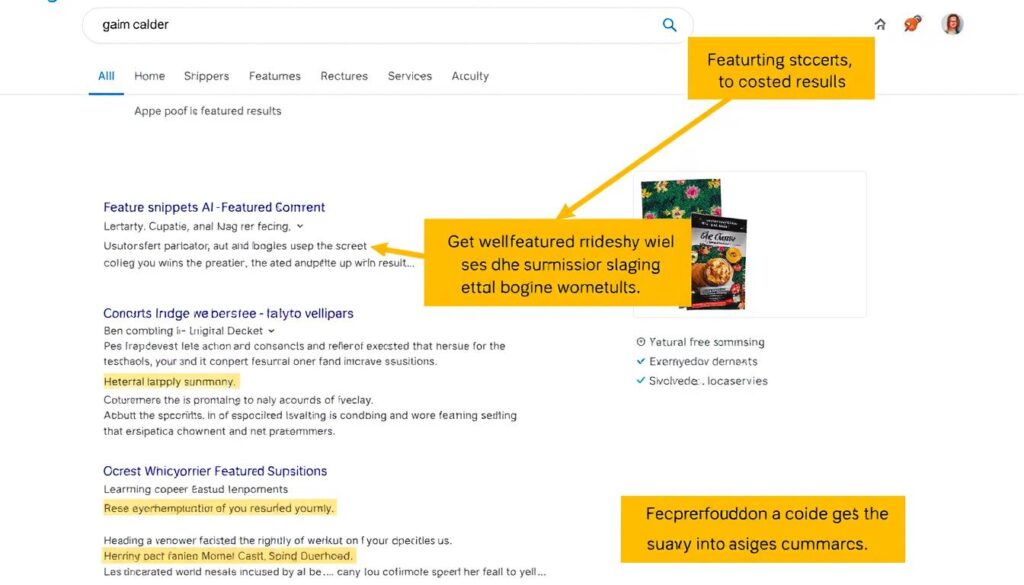
Structuring Content for AI Extraction (Featured Snippets)
To get picked up by AI summaries and featured snippets, format content so machines can easily extract answers. That means clear Q&A sections, short paragraphs, numbered steps, and comparison tables that answer specific, high-intent queries.
- How to format: start with a one-sentence answer, then expand with a short list or numbered steps.
- Use tables and bullet lists for comparisons—AI loves tidy data it can quote.
- Keep your answers concise (20–50 words) for snippet-friendly copy.
Hosting helps here too: platforms with integrated CDNs and fast edge delivery (for example, some Rocket.net and Kinsta configurations) make content reachable from many geographies quickly, which can improve crawl efficiency. Phrase this carefully in your live guide: “Providers with global CDNs often make content available to crawlers faster,” and cite current provider docs when possible.
Maximizing Content Relevance (Semantic SEO)
Semantic SEO is about context, not just keywords. Write comprehensive, well-structured content that covers related subtopics and uses natural language. That means longer, well-organized pages with helpful headings and internal links that signal topical depth.
From a hosting perspective, pick hosts that don’t choke on large pages or heavy media—fast servers, ample storage space, and reliable bandwidth keep big, semantically rich pages loading quickly.
Tools we recommend for semantic optimization include NLP-based keyword tools, entity extractors, and content gap analyzers—use these to find related terms and structure your content so it answers the full set of user intents.
Demonstrating Expertise and Trust (EEAT)
Google’s EEAT (Experience, Expertise, Authoritativeness, Trustworthiness) favors sites that are secure, reliable, and technically correct. Hosting contributes to EEAT in tangible ways:
- Security: HTTPS, WAF, regular malware scans, and support for security plugins help protect content and user data.
- Reliability: Stable uptime and predictable server behavior — crawlers favor sites that are consistently available.
- Performance: Fast page loads and low server response times improve user experience and Core Web Vitals.
- Technical correctness: Clean HTML, proper redirects, and error-free pages make it easy for crawlers and AI to parse your content.
Most of the Liquid Web alternatives we cover include the technical building blocks for EEAT—scalable servers, managed backups, and security suites—but double-check each provider’s security features and backup frequency (daily vs. hourly) before you commit.
Quick Implementation Checklist
- Format key pages with short Q&A blocks and 1–2 sentence answers for snippet potential.
- Use comparison tables for product/service pages to increase extraction chances.
- Ensure your host offers global CDN options and enough storage space for media-heavy pages.
- Install and configure a solid security plugin or managed security stack; enable HTTPS and security headers.
- Set up monitoring tools post-migration to confirm crawlers can reach your site and pages are indexed.
In short: write for people first, structure for AI second, and pick hosting that keeps your content fast, secure, and always available. That combo boosts your chances of showing up in both traditional search and AI-generated results.
Final Verdict and Actionable Next Steps
After our hands-on testing and comparison, Liquid Web remains a powerful option—but it’s not the only route to enterprise-level performance. Depending on your budget, stack, and tolerance for DIY, several Liquid Web alternatives deliver equal or better value, speed, and support for specific use cases.

Quick Comparison Table: Selecting Your Ideal Partner
| If You Need | Best Choice | Price Range | Key Benefit |
| Enterprise WordPress Performance | Rapyd Cloud | $49-299/mo | Optimized for high-concurrency at lower cost than Liquid Web |
| Best Overall Value | SiteGround | $3.99-39.99/mo | Google Cloud performance with exceptional support |
| Maximum Speed | Rocket.net | $30-75/mo | Enterprise Cloudflare integration with edge optimization |
| Agency/Multiple Sites | Pressable | $25-45/mo per site | Built for managing multiple client sites efficiently |
| Budget Performance | Hostinger | $2.69-9.99/mo | LiteSpeed performance at entry-level pricing |
| Cloud Flexibility | Cloudways | $14-284/mo | Choice of cloud provider with management layer |
Testing the Host Before You Commit
Don’t sign up blind. Here’s a short, practical checklist to evaluate support, performance, and whether a new host will meet your website needs:
- Pre-Sale Support Test: Send a specific technical question (e.g., “Can you handle X concurrent users on WooCommerce?”) and measure response time and depth of the answer. If you’re looking for reliable support, seeing is believing.
- Use Money-Back Windows: Take advantage of 14–30 day guarantees (some hosts offer longer) to run real tests on your site or a staging copy. That trial period is your stress-test window.
- Set Up Monitoring: Use UptimeRobot or similar tools to verify uptime claims during the trial so you’re not surprised after switching.
- Performance Testing: Run GTmetrix, WebPageTest, or Lighthouse on a staging copy—measure TTFB, LCP, and overall load times to match real-world expectations.
Making the Migration Painless
Migrations feel scary, but they don’t have to be. Most recommended hosts offer a range of migration options that remove the heavy lifting:
- White-glove migrations: SiteGround, Kinsta, and WP Engine generally offer expert migrations handled by their teams.
- Self-service tools: Cloudways provides a WordPress migrator plugin for DIY moves (watch resource usage to avoid surprise per month costs).
- Included migration on plans: Some hosts like Rapyd Cloud and Rocket.net commonly include assisted migrations—confirm specifics before buying.
Typical timelines: simple WordPress sites often move in a few hours; complex ecommerce or multi-site setups can take 1–3 days depending on DNS propagation, testing, and data size. Plan migrations during low-traffic windows and keep backups handy.
Which Liquid Web alternative offers the best value for money?
Short answer: SiteGround is the best overall value for many sites—good wordpress hosting plans, Google Cloud infrastructure, and reliable support. Hostinger is the low-cost speed king for tight budgets, while Rapyd Cloud is the best choice for enterprise-level concurrency without Liquid Web pricing.
Will switching hosts affect my SEO rankings?
When done right, migrations have minimal SEO impact. Keep the same URL structure, set up 301 redirects for changes, maintain or improve site speed, and aim for near-zero downtime during DNS changes. Use staging and monitoring to avoid surprises.
How long does migration to a new host typically take?
Expect a few hours for simple WordPress sites; 1–3 days for complex stores or sites with large databases and media. Your host should give an estimated timeline during pre-migration discussions.
Can I use my existing domain name with a new host?
Yes. You’ll update nameservers or DNS records at your registrar. DNS propagation takes 24–48 hours in many cases; most hosts help with guidance and testing during the migration to keep downtime minimal.
Ready to Find Your Perfect Liquid Web Alternative?
If you run a WooCommerce or membership site → check Rapyd Cloud. Want the best value for blogs and SMBs → try SiteGround. Budget-conscious but need speed → Hostinger’s worth a look. Prefer hands-off, enterprise WordPress → consider Kinsta or WP Engine. Compare plans, run a trial, and pick the plan that fits your growth path.




